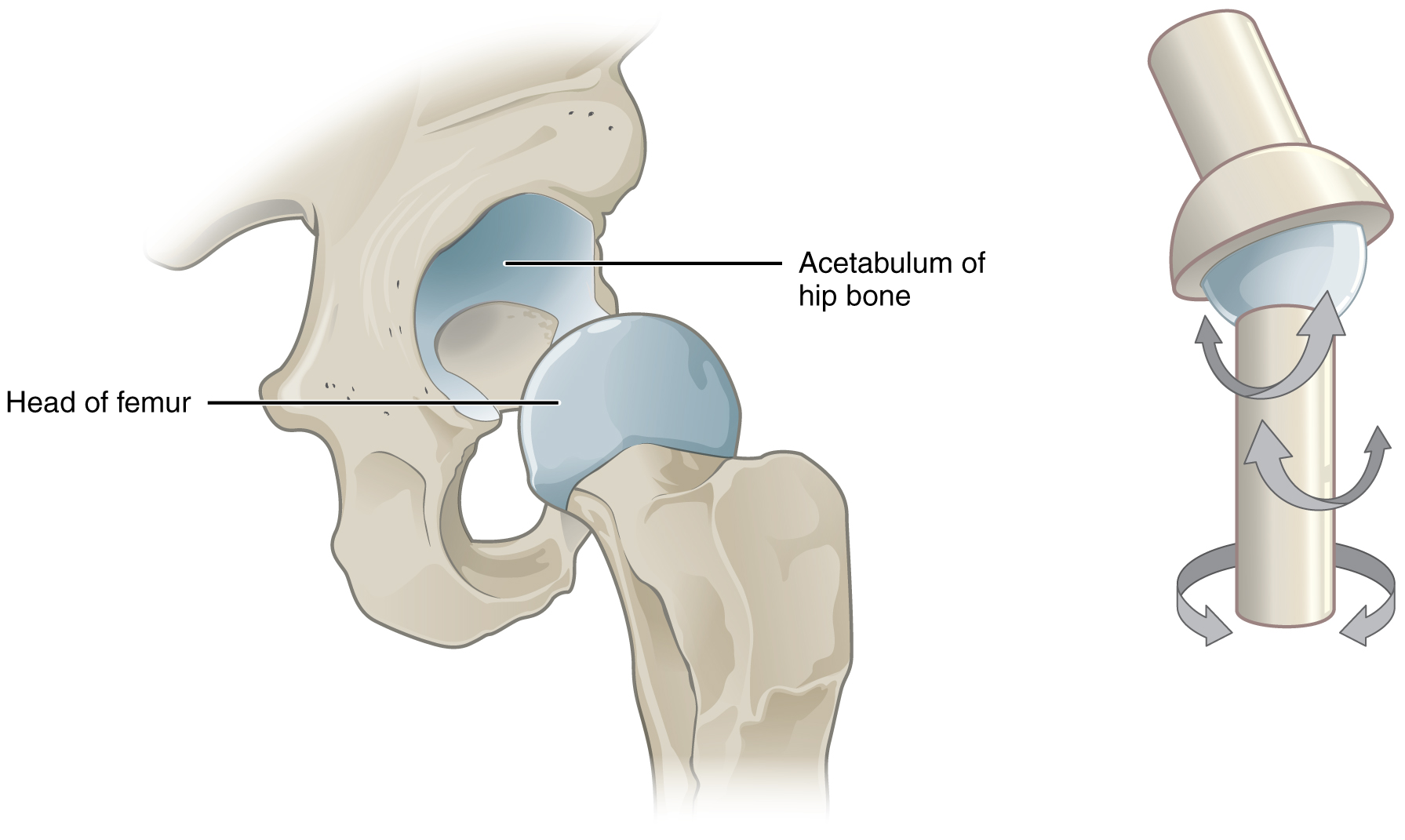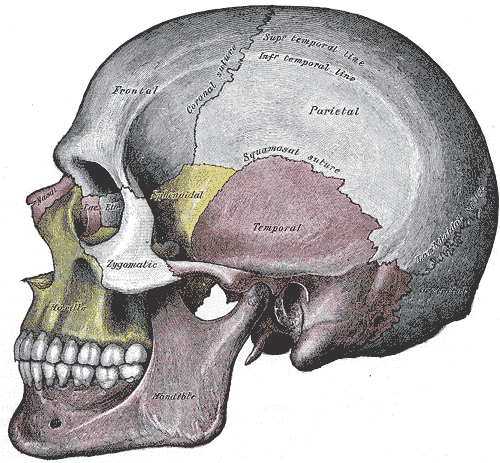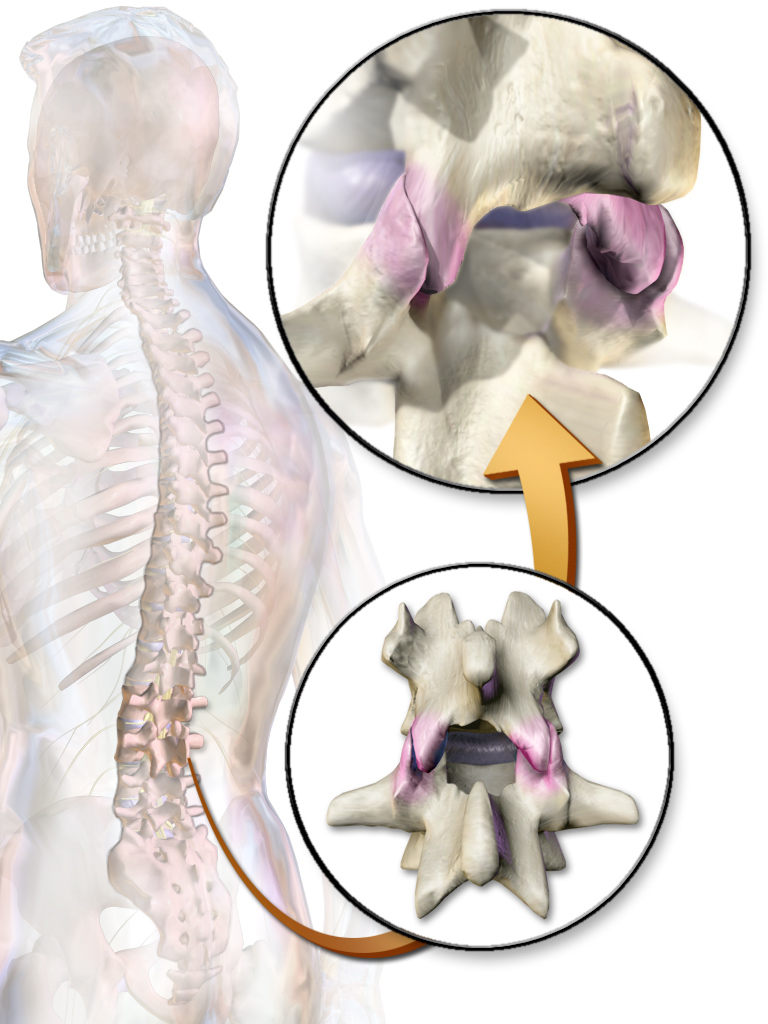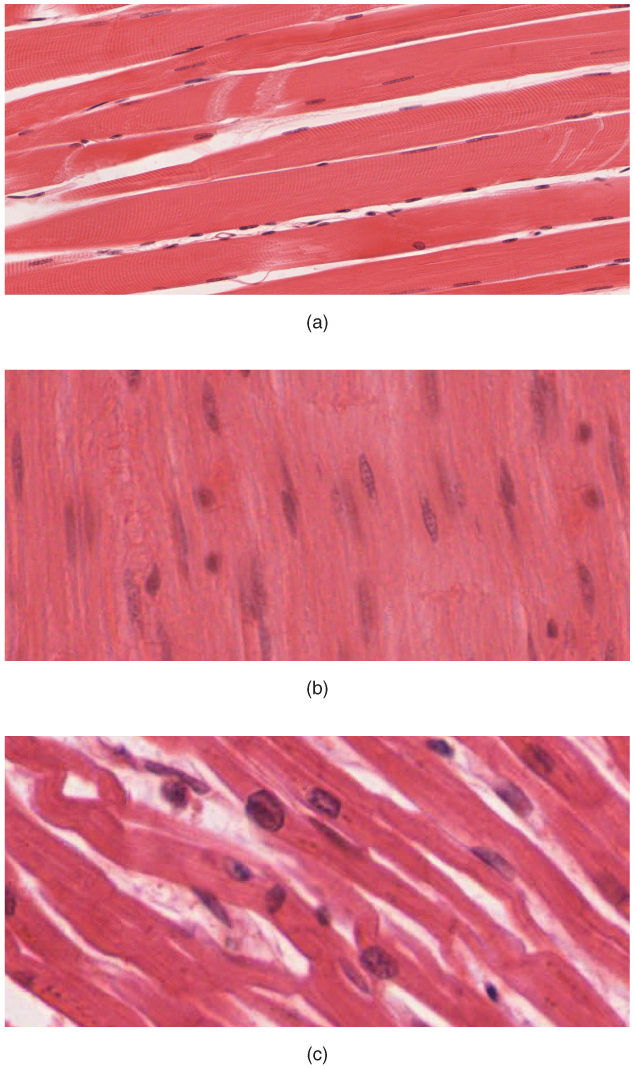|
Joints
A joint or articulation (or articular surface) is the connection made between bones, ossicles, or other hard structures in the body which link an animal's skeletal system into a functional whole.Saladin, Ken. Anatomy & Physiology. 7th ed. McGraw-Hill Connect. Webp.274/ref> They are constructed to allow for different degrees and types of movement. Some joints, such as the knee, elbow, and shoulder, are self-lubricating, almost frictionless, and are able to withstand compression and maintain heavy loads while still executing smooth and precise movements. Other joints such as suture (joint), sutures between the bones of the skull permit very little movement (only during birth) in order to protect the brain and the sense organs. The connection between a tooth and the jawbone is also called a joint, and is described as a fibrous joint known as a gomphosis. Joints are classified both structurally and functionally. Joints play a vital role in the human body, contributing to movement, sta ... [...More Info...] [...Related Items...] OR: [Wikipedia] [Google] [Baidu] |
Synovial Joint
A synovial joint, also known as diarthrosis, joins bones or cartilage with a fibrous joint capsule that is continuous with the periosteum of the joined bones, constitutes the outer boundary of a synovial cavity, and surrounds the bones' articulating surfaces. This joint unites long bones and permits free bone movement and greater mobility. The synovial cavity/joint is filled with synovial fluid. The joint capsule is made up of an outer layer of fibrous membrane, which keeps the bones together structurally, and an inner layer, the synovial membrane, which seals in the synovial fluid. They are the most common and most movable type of joint in the body. As with most other joints, synovial joints achieve movement at the point of contact of the articulating bones. They originated 400 million years ago in the first jawed vertebrates. Structure Synovial joints contain the following structures: * Synovial cavity: all diarthroses have the characteristic space between the bones that is f ... [...More Info...] [...Related Items...] OR: [Wikipedia] [Google] [Baidu] |
Suture (joint)
In anatomy, fibrous joints are joints connected by fibrous tissue, consisting mainly of collagen. These are fixed joints where bones are united by a layer of white fibrous tissue of varying thickness. In the skull, the joints between the bones are called sutures. Such immovable joints are also referred to as synarthroses. Types Most fibrous joints are also called "fixed" or "immovable". These joints have no joint cavity and are connected via fibrous connective tissue. * Sutures: The skull bones are connected by fibrous joints called '' sutures''. In fetal skulls, the sutures are wide to allow slight movement during birth. They later become rigid ( synarthrodial). * Syndesmosis: Some of the long bones in the body such as the radius and ulna in the forearm are joined by a '' syndesmosis'' (along the interosseous membrane). Syndemoses are slightly moveable ( amphiarthrodial). The distal tibiofibular joint is another example. * A '' gomphosis'' is a joint between the roo ... [...More Info...] [...Related Items...] OR: [Wikipedia] [Google] [Baidu] |
Fibrous Joint
In anatomy, fibrous joints are joints connected by Fibrous connective tissue, fibrous tissue, consisting mainly of collagen. These are fixed joints where bones are united by a layer of white fibrous tissue of varying thickness. In the skull, the joints between the bones are called Suture (anatomy), sutures. Such immovable joints are also referred to as synarthrosis, synarthroses. Types Most fibrous joints are also called "fixed" or "immovable". These joints have no joint cavity and are connected via fibrous connective tissue. * Suture (anatomy), Sutures: The skull bones are connected by fibrous joints called ''#Sutures, sutures''. In fetus, fetal skulls, the sutures are wide to allow slight movement during birth. They later become rigid (synarthrosis, synarthrodial). * Syndesmosis: Some of the long bones in the body such as the radius (bone), radius and ulna in the forearm are joined by a ''#Syndesmosis, syndesmosis'' (along the interosseous membrane of forearm, interosseous mem ... [...More Info...] [...Related Items...] OR: [Wikipedia] [Google] [Baidu] |
Gomphosis
In anatomy, fibrous joints are joints connected by fibrous tissue, consisting mainly of collagen. These are fixed joints where bones are united by a layer of white fibrous tissue of varying thickness. In the skull, the joints between the bones are called sutures. Such immovable joints are also referred to as synarthroses. Types Most fibrous joints are also called "fixed" or "immovable". These joints have no joint cavity and are connected via fibrous connective tissue. * Sutures: The skull bones are connected by fibrous joints called '' sutures''. In fetal skulls, the sutures are wide to allow slight movement during birth. They later become rigid ( synarthrodial). * Syndesmosis: Some of the long bones in the body such as the radius and ulna in the forearm are joined by a '' syndesmosis'' (along the interosseous membrane). Syndemoses are slightly moveable ( amphiarthrodial). The distal tibiofibular joint is another example. * A '' gomphosis'' is a joint between the roo ... [...More Info...] [...Related Items...] OR: [Wikipedia] [Google] [Baidu] |
Cartilaginous Joint
Cartilaginous joints are connected entirely by cartilage (fibrocartilage or hyaline). Cartilaginous joints allow more movement between bones than a fibrous joint but less than the highly mobile synovial joint. Cartilaginous joints also forms the growth regions of immature long bones and the intervertebral discs of the spinal column. __TOC__ Primary cartilaginous joints Primary cartilaginous joints are known as " synchondrosis". These bones are connected by hyaline cartilage and sometimes occur between ossification centers. This cartilage may ossify with age. Some examples of primary cartilaginous joints in humans are the "growth plates" between ossification centers in long bones. These joints allow very little movement, such as in the spine or ribs. Secondary cartilaginous joints Secondary cartilaginous joints are known as " symphysis". These include fibrocartilaginous and hyaline joints, which usually occur at the midline. Some examples of secondary cartilaginous join ... [...More Info...] [...Related Items...] OR: [Wikipedia] [Google] [Baidu] |
Facet Joint
The facet joints (also zygapophysial joints, zygapophyseal, apophyseal, or Z-joints) are a set of synovial joint, synovial, plane joints between the articular processes of two adjacent vertebrae. There are two facet joints in each functional spinal unit, spinal motion segment and each facet joint is innervated by the Meningeal branches of spinal nerve, recurrent meningeal nerves. Innervation Innervation to the facet joints vary between segments of the spinal, but they are generally innervated by medial branch nerves that come off the dorsal rami. It is thought that these nerves are for primary sensory input, though there is some evidence that they have some motor input local musculature. Within the cervical spine, most joints are innervated by the medial branch nerve (a branch of the dorsal rami) from the same levels. In other words, the facet joint between C4 and C5 vertebral segments is innervated by the C4 and C5 medial branch nerves. However, there are two exceptions: # T ... [...More Info...] [...Related Items...] OR: [Wikipedia] [Google] [Baidu] |
Ball And Socket Joint
The ball-and-socket joint (or spheroid joint) is a type of synovial joint in which the ball-shaped surface of one rounded bone fits into the cup-like depression of another bone. The distal bone is capable of motion around an indefinite number of axes, which have one common center. This enables the joint to move in many directions. An enarthrosis is a special kind of spheroidal joint in which the socket covers the sphere beyond its equator.Platzer, Werner (2008) ''Color Atlas of Human Anatomy'', Volume 1p.28/ref> Examples of joints Examples of this form of articulation are found in the hip, where the round head of the femur (ball) rests in the cup-like acetabulum (socket) of the pelvis The pelvis (: pelves or pelvises) is the lower part of an Anatomy, anatomical Trunk (anatomy), trunk, between the human abdomen, abdomen and the thighs (sometimes also called pelvic region), together with its embedded skeleton (sometimes also c ...; and in the shoulder joint, where the rou ... [...More Info...] [...Related Items...] OR: [Wikipedia] [Google] [Baidu] |
Condyloid Joint
A condyloid joint (also called condylar, ellipsoidal, or bicondylar) is an ovoid articular surface, or condyle that is received into an elliptical cavity. This permits movement in two planes, allowing flexion, extension, adduction, abduction, and circumduction. Examples Examples include: * the wrist-joint * metacarpophalangeal joints * metatarsophalangeal joints * atlanto-occipital joints These are also called ellipsoid joints. The oval-shaped condyle of one bone fits into the elliptical cavity of the other bone. These joints allow biaxial movements — i.e., forward and backward, or from side to side, but not rotation. Radiocarpal joint and metacarpophalangeal joint are examples of condyloid joints. An example of an Ellipsoid joint is the wrist; it functions similarly to the ball and socket joint The ball-and-socket joint (or spheroid joint) is a type of synovial joint in which the ball-shaped surface of one rounded bone fits into the cup-like depression of anoth ... [...More Info...] [...Related Items...] OR: [Wikipedia] [Google] [Baidu] |
Pivot Joint
In animal anatomy, a pivot joint (trochoid joint, rotary joint or lateral ginglymus) is a type of synovial joint whose movement axis is parallel to the long axis of the proximal bone, which typically has a convex articular surface. According to one classification system, a pivot joint like the other synovial joint—the hinge joint has one degree of freedom.Platzer, Werner (2008) ''Color Atlas of Human Anatomy'', Volume 1p.28/ref> Note that the degrees of freedom of a joint is not the same as a joint's range of motion. Movements Pivot joints allow rotation Rotation or rotational/rotary motion is the circular movement of an object around a central line, known as an ''axis of rotation''. A plane figure can rotate in either a clockwise or counterclockwise sense around a perpendicular axis intersect ..., which can be external (for example when rotating an arm outward), or internal (as in rotating an arm inward). When rotating the forearm, these movements are typically ca ... [...More Info...] [...Related Items...] OR: [Wikipedia] [Google] [Baidu] |
Hinge Joint
A hinge joint (ginglymus or ginglymoid) is a bone joint where the articular surfaces are molded to each other in such a manner as to permit motion only in one plane. According to one classification system they are said to be uniaxial (having one degree of freedom).Platzer, Werner (2008) ''Color Atlas of Human Anatomy', Volume 1p.28/ref> The direction which the distal bone takes in this motion is rarely in the same plane as that of the axis of the proximal bone; there is usually a certain amount of deviation from the straight line during flexion. The articular surfaces of the bones are connected by strong collateral ligaments. Examples of ginglymoid joints are the interphalangeal joints of the hand and those of the foot and the joint between the humerus and ulna. The knee joints and ankle joints are less typical, as they allow a slight degree of rotation or side-to-side movement in certain positions of the limb. The knee is the largest hinge joint in the human body ... [...More Info...] [...Related Items...] OR: [Wikipedia] [Google] [Baidu] |
Musculoskeletal System
The human musculoskeletal system (also known as the human locomotor system, and previously the activity system) is an organ system that gives humans the ability to move using their Muscular system, muscular and Human skeleton, skeletal systems. The musculoskeletal system provides form, support, stability, and movement to the body. The human musculoskeletal system is made up of the bones of the human skeleton, skeleton, muscles, cartilage, tendons, ligaments, joints, and other connective tissue that supports and binds tissues and organs together. The musculoskeletal system's primary functions include supporting the body, allowing motion, and protecting vital organs. The skeletal portion of the system serves as the main storage system for calcium and phosphorus and contains critical components of the hematopoietic system. This system describes how bones are connected to other bones and muscle fibers via connective tissue such as tendons and ligaments. The bones provide stability t ... [...More Info...] [...Related Items...] OR: [Wikipedia] [Google] [Baidu] |




